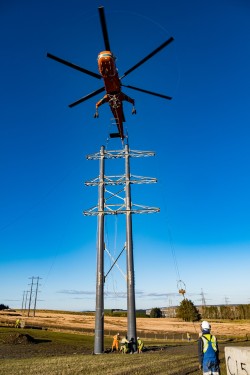Andy Ormerod, Balfour Beatty Managing Director, Plant and Fleet Services is leading Balfour Beatty's commitment to reducing onsite activity by 25% by 2025. Here, he explains how the new generation of industrialised construction methods has the potential to transform the way the industry operates and offers seven steps on how in the construction industry can work towards securing the benefits of offsite construction.
As construction professionals, we are all too aware of the problems that we have to manage on a daily basis in terms of: delivering within budget, margins, mitigating any environmental impacts, managing the shortage of skills and above all - ensuring the safety of all those who come into contact with our sites.
Many in the industry are also aware that the new industrialised construction techniques available - which include offsite and modular building techniques - have the potential to reduce the amount of onsite activity. This will enable the industry to overcome its long-standing problems by increasing efficiency and production, improve the quality construction projects and enhance safety on our construction sites.
Yet despite the widespread recognition of the very real benefits that industrialised construction methods bring, only 12% of construction today involves offsite methods. On the surface this seems strange because the construction industry in the UK can rightly be proud of its investment and development of new technologies - such as Building Information Management (BIM) - so how can companies embrace these industrialised construction techniques and realise the many benefits they bring?
At Balfour Beatty, we have embraced such techniques and are already realising the benefits. Recently, in collaboration with our client Scottish & Southern Electricity Networks, we installed 140 newly-designed composite poles to carry a power cable connecting the remote Dorenell wind farm to the Blackhillock Substation, near Keith in Scotland. We shipped two specialist Erickson S64-F Air Crane helicopters from the USA to lift and install the poles. This innovative installation method meant that we did not need access tracks for the erection process and could install the poles far quicker in locations that would have been difficult to access by traditional crane methods, whilst also minimising the impact of our works on the Scottish countryside. Using this method also meant we could preassemble all the poles in a single location, creating a standardised high quality assembly and fabrication facility and reducing the work that was required at each tower location. This made the fabrication and assembly of each pole safer, quicker, easier and more accurate.
So if the benefits can easily be proven: Why the inertia? In an industry where interests are unaligned, competition is intense and margins are thin, 'breaking the mould' does not seem to be a viable option for construction providers. Additionally, the fear of failing by trying something new still persists for those responsible for procuring construction projects. But doing things in the same way will mean that the construction industry will continue to be dogged by the same issues.
In our recent policy paper: '25% by 2025: Streamlined construction by 25% by 2025 - seven steps to offsite and modular building', we not only outline how Balfour Beatty has made offsite production a core part of our strategy with our commitment to reducing onsite activity by 25% by 2025, but we also offer seven steps on how both providers and procurers in the construction industry can overcome its inertia towards offsite production and transform its model:
- Ensuring the continuity of pipeline flow - construction commissioners must take a long-term view of their construction requirements. The economies of scale are not realised in one scheme, but over an extended timeframe over a number of schemes.
- Improve the standardisation of components and design - prioritising the standardisation of designs and components will incentivise the increased use of offsite manufacture
- Invest in research and development (R&D) - we welcome the £170 million Transforming Construction Programme, which aims to leverage a further £250 million from the industry through its contribution to funding R&D projects. However, the sums involved are still relatively small. More investment is needed given the changes involved to make offsite construction a reality which means construction has to fundamentally change the way it has operated since its inception.
- Change the construction procurement model - the current procurement model, which favours lowest-cost tendering, leads to a false economy of short-term cost savings at the expense of investment in the innovative new techniques and materials required.
- Collaborate relentlessly - construction must become more collaborative and work harder at sharing best practice in order to drive change.
- Learn from the manufacturing industry - construction has much to learn from the manufacturing industry. For example, the aerospace and automotive sectors use offsite manufacturing techniques from digital models in the design phase through to components in a factory. These methods can be applied to the construction industry.
- Invest in skills for the future - offsite manufacturing requires a completely different approach and set of skills - again this requires investment.
We must accelerate the pace of change. The costs to the construction industry by not embracing the new methods on offer are high in terms of efficiencies, quality and safety. Government, as the industry's largest client, should take a lead, however to fully realise these benefits of offsite construction - all in the construction must commit to change.
You can read or download the recent Balfour Beatty policy paper: 25% by 2025: Streamlined construction by 25% by 2025 - seven steps to offsite and modular building" at: www.balfourbeatty.com/how-we-work/public-policy/
To read the full article in Offsite Magazine, go to the digital version of Issue 13 









